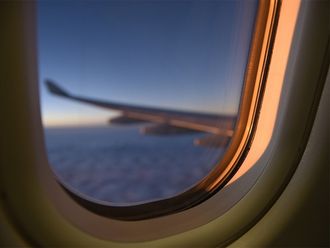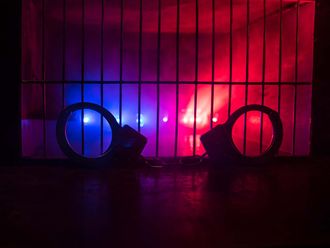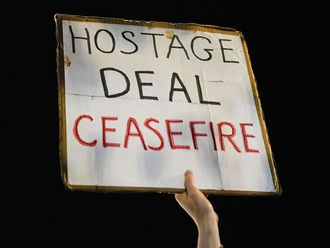Paris: Paris will no longer take your breath away.
Its monuments, avenues and restaurants might, of course, but Mayor Anne Hidalgo is pledging its pollution won’t. The city, host to the COP21 United Nations climate conference last year, will ensure the French capital’s air is cleaner and that its citizens have a healthier environment, she says.
Starting July 1, cars registered before October 1997 and motorcycles registered before June 1999 will be barred from the city’s streets on week days, effectively removing vehicles that contribute about 5 per cent of polluting elements linked to cancers, heart disease and respiratory problems such as asthma.
Paris, among the European Union’s laggards on air-quality control, is introducing rules that will leave only zero-emission and petrol-fuelled cars registered after January 2011 on its streets on weekdays by 2020. Hidalgo faces a two-pronged battle: while car owners are up in arms over her rules, the EU is pushing France to comply with pollution limits or face sanctions. Her task is made even more challenging by the fact that peers like London, which started its air-quality fight more than a decade ago in 2003, are still grappling with health-threatening levels.
“Paris is going in the right direction,” said Amelie Fritz, head of public relations at air monitoring agency Airparif, noting that limiting traffic on Paris’s renowned Avenue des Champs-Elysees one Sunday a month cut nitrogen dioxide levels by 30 per cent on those days. “That shows the city can make a difference, depending on how far it goes.”
Not ambitious
For some, Paris is not going far enough.
Cars, buses, vans and other ground transport fill the Paris air with 65 per cent of its nitrogen dioxide, or NO2, emissions and 51 per cent of its polluting particles, known as PM10. On the Champs-Elysees, and throughout the city, both pollutants breached the EU limit of 40 micrograms per cubic meter last year. In most areas, the daily amount of PM10 particles exceeded 50 micrograms per cubic meter for 10 to 20 days when the World Health Organisation recommends a maximum of three days a year.
On peak pollution days in the past, the city has resorted to partial driving bans, halving the number of vehicles in circulation by alternately barring automobiles with license plates ending with odd or even numbers from entering the city.
Still, unlike London, Milan or Stockholm, Paris has ruled out charging schemes — a congestion toll for all vehicles or a pollution toll for older cars. It has also postponed generalising a 30 kilometre speed limit and given up on its plans to reserve its four most central arrondissements to pedestrians, cyclists and public transportation or impose ultra-low emission rules on such key streets as rue de Rivoli or Champs-Elysees. For now, it has also ruled out traffic restrictions on the ring-road that circles the capital.
“Paris is among cities that are only just starting to seriously address massive air-quality problems known for years,” said Arne Fellermann, a Berlin-based transport expert for Friends of the Earth Germany, which carried out a European cities ranking in which Paris had a very low grade for emission reduction. “We’re not seeing sufficient ambition yet. Car drivers need to accept they are a main part of the problem.”
Collective responsibility
Vehicle owners have had trouble with that. They have complained that banning cars from August on a new portion along banks of the River Seine, which flows across the capital, will aggravate traffic jams.
The city already risks a class-action suit by car owners against its decision to impose a 35-euro ($39) fine as of July 1 on drivers who breach Hidalgo’s traffic restrictions.
“It’s our collective responsibility to fight pollution and change models,” Hidalgo tweeted on June 8.
The opposition is forcing the city to take small steps. The government has approved doubling bicycle lanes, replacing red lights by give-way signs for cyclists and providing financial aid for electric-cycle purchases, subscription to the city’s electric shared-car system and a car-scrapping project. Efforts underway to make the city greener include adding 30 hectares of parks — about a seventh of Paris’s famed Luxembourg gardens — and three times as much in flowered and grassy walls and roofs.
Slowly, but surely
The moves are less drastic than in other parts of the world.
In Japan, where diesel engines were as popular as in France in the 1990s, legal action from residents forced Tokyo’s government to introduce particle-emission norms more than a decade ago. New plans include shifting taxi fleets to LPG-powered hybrids as PM10 levels still breach WHO recommendations.
London, where traffic contributes to air pollution as much as in Paris, has favoured taxes, with a congestion charge in the centre for pre-2011 cars. Since 2008, pre-2002 and pre-2006 trucks, buses and vans pay an added levy in a wider low-emission zone. From 2020, all motorcycles registered before 2007, petrol cars before 2006 and diesel cars before 2015 will pay an extra 12.50 British pounds ($18) per day as ultra low-emission standards apply to the congestion zone.
Faced with legal action from environmental organisation ClientEarth to force the government to comply with EU limits before 2025, newly elected Mayor Sadiq Khan last month announced an extension of the ultra low-emission zone, a higher congestion charge for heavy polluters and diesel vehicles.
In Paris, an ultra-low emission lane on one road may be experimented in 2017 or 2018, Hidalgo adviser Christophe Najdovski’s staff said in an emailed response to questions. The measures will be adjusted as their effects are evaluated.
“These measures will have a strong symbolic impact,” said Sebastien Vray, head of Respire, a group of citizens seeking to attract attention to atmospheric pollution. “The fact that authorities are at least listening to scientists who say that pollution has an impact on health — that will definitely impact public opinion in the long term.”












